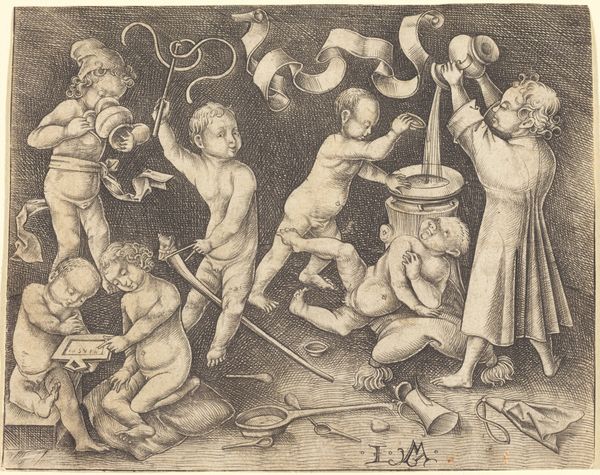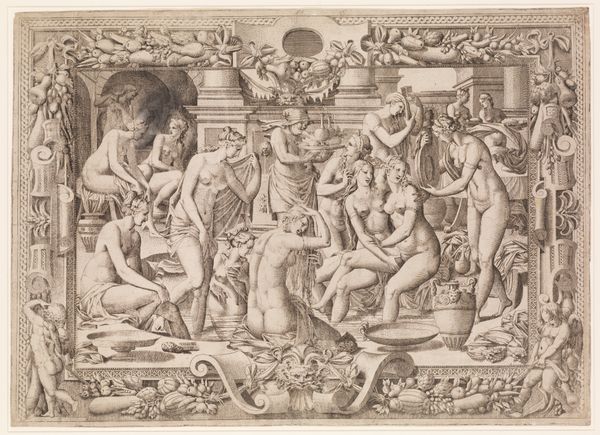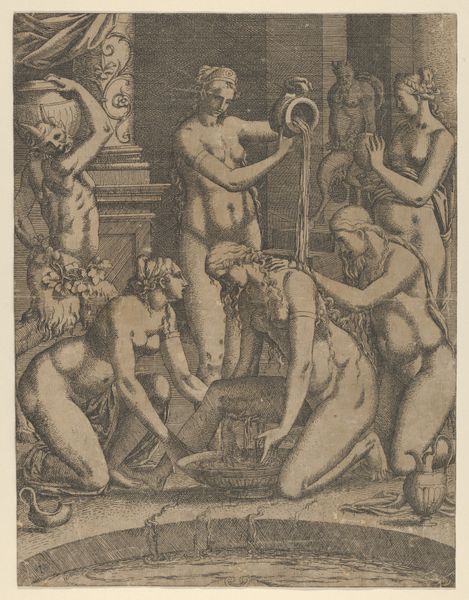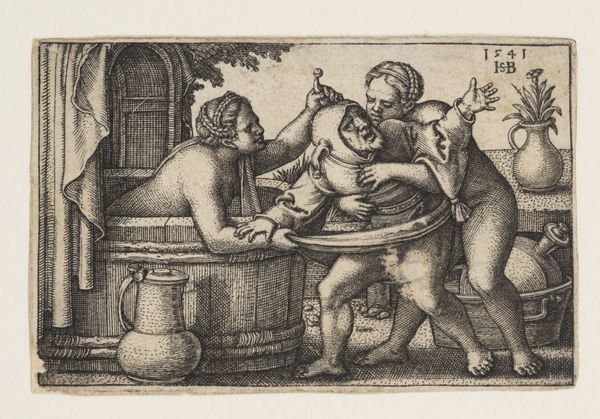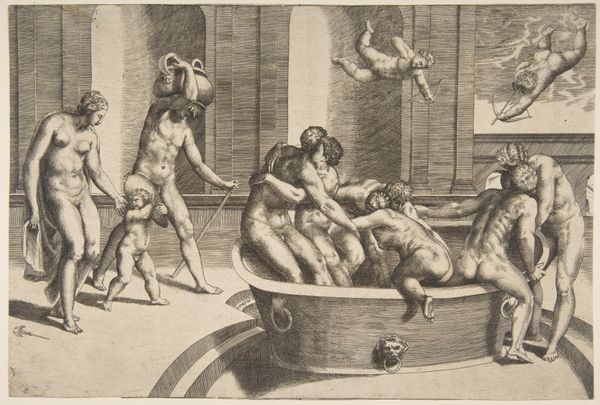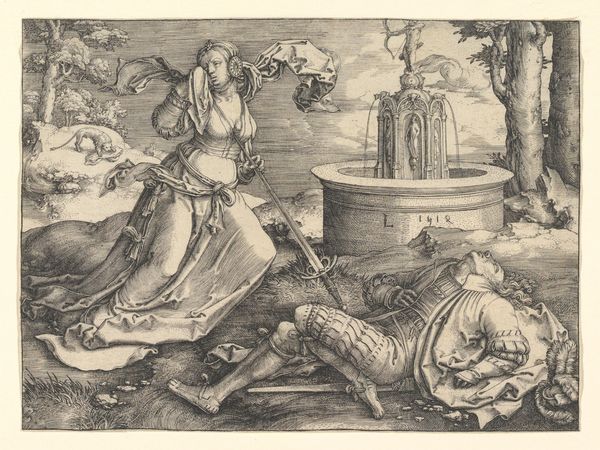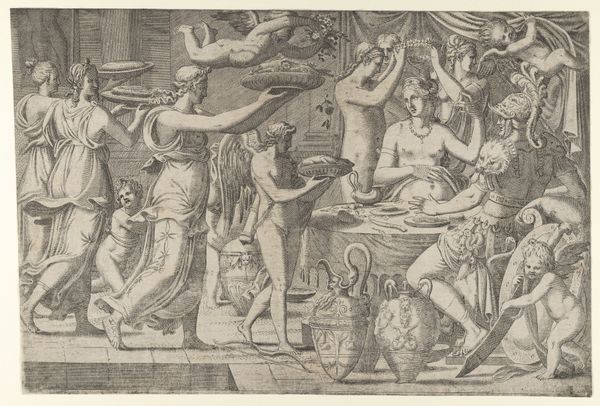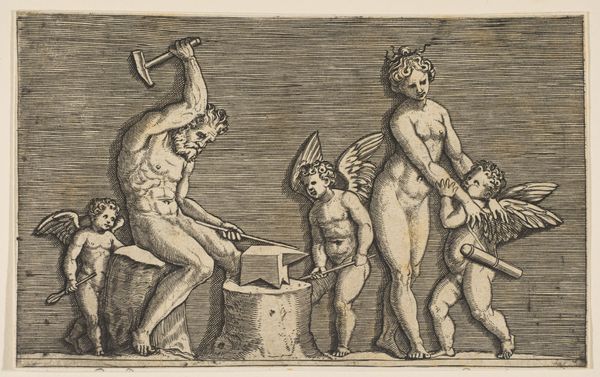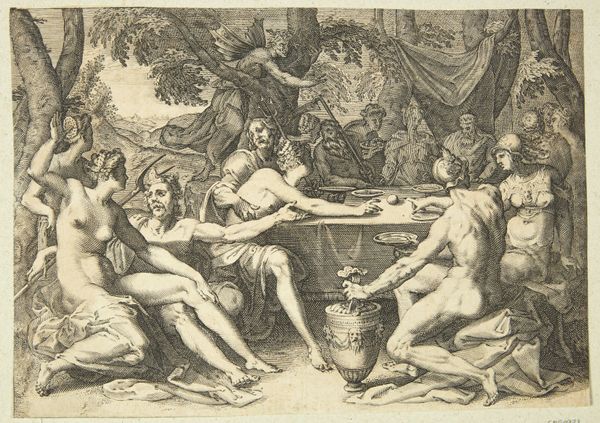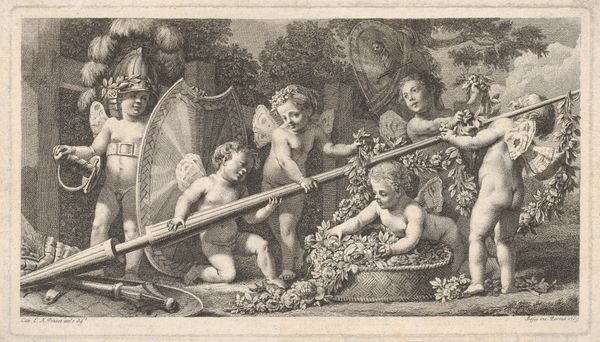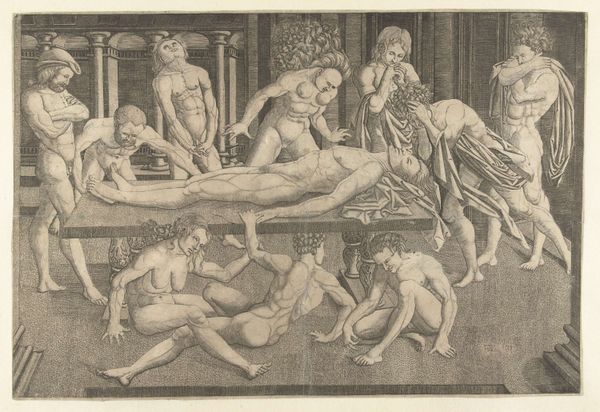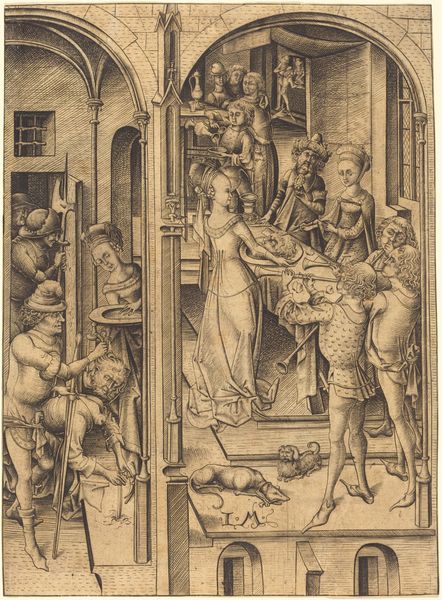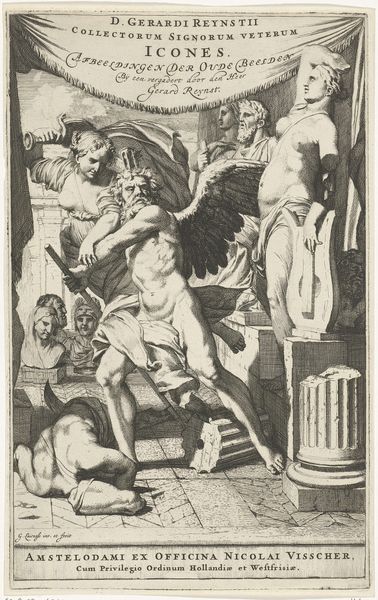
drawing, print, paper, engraving
#
drawing
#
pen drawing
# print
#
paper
#
genre-painting
#
northern-renaissance
#
nude
#
engraving
Dimensions: 109 × 137 mm (image/sheet)
Copyright: Public Domain
Israhel van Meckenem created 'The Children's Bath' around 1475 using the technique of engraving. This printmaking process involves incising an image onto a metal plate, inking the plate, and then pressing it onto paper. The controlled lines we see here are a direct result of the engraver's hand, carefully carving each stroke. The image is rich in detail, from the textures of the wooden tub to the delicate features of the figures, all achieved through the precise manipulation of the metal plate. Engraving in the 15th century was a highly skilled craft, requiring years of training and a deep understanding of metallurgy and printing. Van Meckenem was one of the most prolific engravers of his time, and his prints were widely circulated, making art accessible to a broader audience. The labor-intensive process, typical of early printmaking, reflects a pre-industrial era where craftsmanship and manual skill were highly valued. This print stands as a testament to the intricate relationship between material, process, and the social context of its creation.
Comments
No comments
Be the first to comment and join the conversation on the ultimate creative platform.
